Access to Chorakukan
Chorakukan is located by Maruyama Park in a corner of Higashiyama, Kyoto, where you can enjoy a panoramic view of the changing seasons.
Think back to the good old days surrounded by Kyoto's famous landmarks such as Yasaka Shrine, Kiyomizu-dera Temple, Kodai-ji Temple, and Chion-in Temple.
01 CHOURAKUKAN
02 GOOGLE MAP
03 TRAFFIC Traffic Information
-
Cab from JR Kyoto Station (15 minutes)
Please mention Chourakukan on the south side of Maruyama Park (main entrance on the east side).
-
City bus from JR Kyoto Station (about 30 minutes)
Board No. 206 and get off at "Gion.
After passing through the main hall of Yasaka Shrine, enter Maruyama Park and turn right at the first corner to find the main entrance to Chourakukan. -
Walk from Hankyu "Kyoto Kawaramachi" station (about 15 minutes)
Take Exit No. 1 (Kiyamachi South Exit) and go east on Shijo Dori toward Yasaka Shrine.
After passing through the main hall of Yasaka Shrine, enter Maruyama Park and turn right at the first corner to find the main entrance to Chourakukan. -
Cab from Hankyu "Kyoto Kawaramachi" station (approx. 5 minutes)
Please mention Chourakukan on the south side of Maruyama Park (main entrance on the east side).
-
Walk from Keihan "Gion-Shijo" station (approx. 10 min.)
Take Exit No. 6 and walk east on Shijo Dori toward Yasaka Shrine.
After passing through the main hall of Yasaka Shrine, enter Maruyama Park and turn right at the first corner to find the main entrance to Chourakukan. -
Walk from Higashiyama Station on the Kyoto Municipal Subway (approx. 15 min.)
Take Exit No. 1 and go east, then turn right at the intersection of Sanjo Jingu-michi and go south on Jingu-michi toward Maruyama Park.
Enter Maruyama Park and continue south to the main entrance of Chourakukan.
04 SIGHTSEEING Area guide
-
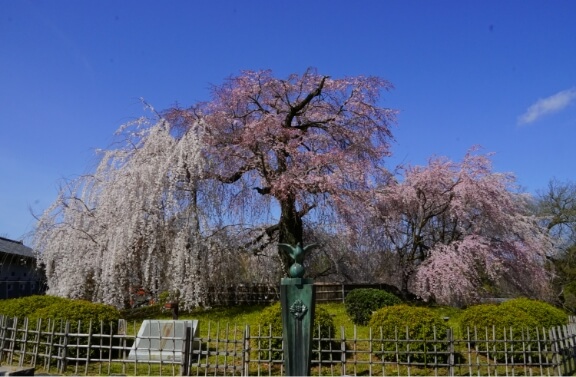
Maruyama Park
Maruyama Park is famous for its cherry blossoms, represented by the "Gion-edare-zakura" (weeping cherry trees). The park is the oldest park in Kyoto City and is a garden with a pond and circular garden that has been designated as a national place of scenic beauty. The cherry blossoms are especially popular during the season, and bonfires are lit at night to create a fantastic night view of the cherry blossoms. The fresh greenery in early summer and the autumn leaves of the Iroha maple trees in fall make for a stroll in every season.
-
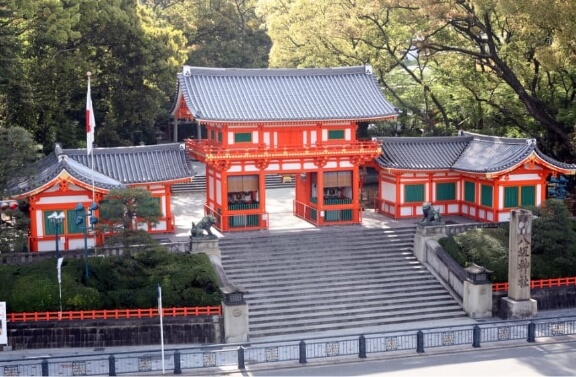
Yasaka Shrine
Yasaka Shrine, also known as Gion Shrine, is the head shrine of the nationwide Yasaka faith and is designated as a national treasure. The striking vermilion color of the main hall and the entrance gate captivates the eyes of visitors. It is affectionately called "Gion-san" and hosts various festivals throughout the year, including the renowned Gion Festival, which is one of Japan's three major festivals. People from all over the country visit to seek blessings such as warding off evil, matchmaking, and beauty prayers. The Gion area, centered around Yasaka Shrine, exudes a traditional and elegant atmosphere that has been preserved from ancient times.
Photo credit: Yasaka Shrine -
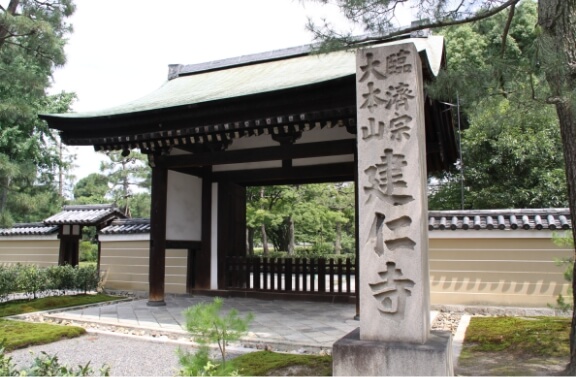
Kennin-ji Temple
The oldest Zen temple in Kyoto, and the head temple of the Kenninji School of Rinzai Zen Buddhism. The temple is home to numerous cultural assets, including the national treasures "The Wind and Thunder Gods" by Sotatsu Tawaraya and the sliding doors of the hojo (banjo) with "Dragons and Clouds" by Sotatsu Tawaraya. The originals of both paintings are deposited in the Kyoto National Museum and are not open to the public, but high-resolution facsimiles can be seen at Kenninji. There are three types of karesansui (dry landscape) gardens, each with a different flavor, that allow visitors to experience the philosophy of Zen through the gardens.
Photo credit: Kennin-ji Temple -
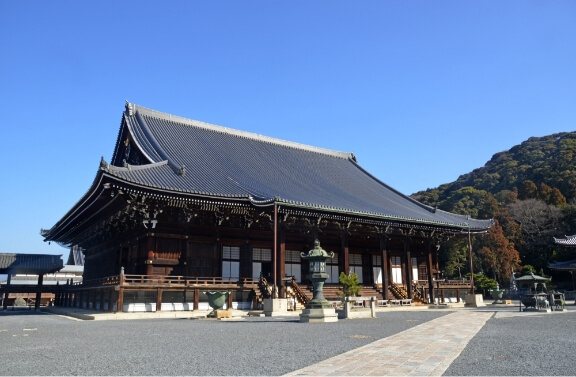
Chion-in Temple
This temple is the head temple of the Jodo sect of Buddhism and has a long history. Many of the buildings are designated as national treasures or important cultural properties, including Sanmon, one of the largest double wooden gates in Japan, and Mikageido, which rises at the top of a stairway. Special openings and sutra recitations are held periodically, making it a great place to experience and become familiar with the culture.
Photo credit: Chion-in Temple -
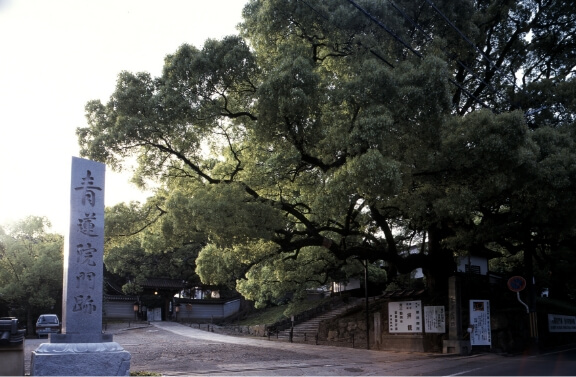
Shoren-in Monzeki
Shoren-in Monzeki, also known as Awata Gosho, is one of the three Monzeki temples of the Tendai sect of Buddhism, located in Awataguchi, Higashiyama-ku, Kyoto. It features exquisite gardens attributed to Soami and Kobori Enshu, known for their mastery of garden design. These gardens, including the one inspired by Mt. Kirishima, offer breathtaking views that change with each season. Inside the splendid Kahochi-den hall, visitors can enjoy vibrant painted sliding door panels created by the muralist Kimura Hideki.
Photo credit: Shoren-in Monzeki -
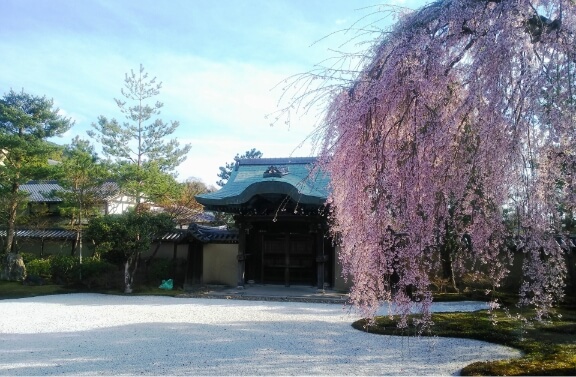
Kodai-ji Temple
This temple was built by Kitamasasho Nene to mourn the death of Toyotomi Hideyoshi. The temple grounds are famous as one of the best places in Kyoto for viewing the autumn leaves and cherry blossoms. The Entokuin Temple, where Nene spent the last years of her life, still has a beautiful garden, which is elaborately illuminated at night in spring and fall.
-
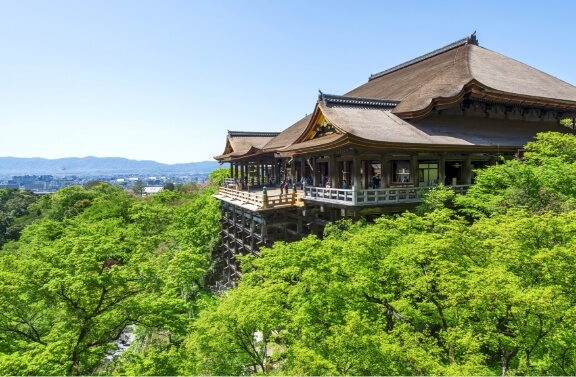
Kiyomizu-dera Temple
Kiyomizu-dera Temple is the main temple of the Kitahossō sect, founded 778 years ago. It is renowned for its wooden stage, called "Kiyomizu no Butai," which juts out from the main hall. The temple is registered as a UNESCO World Cultural Heritage site as one of the "Historic Monuments of Ancient Kyoto." Three times a year, in spring, summer, and autumn, special evening visits are held, allowing visitors to enjoy the enchanting night view, which is one of the main attractions of the temple.
Photo credit: Kiyomizu-dera Temple -
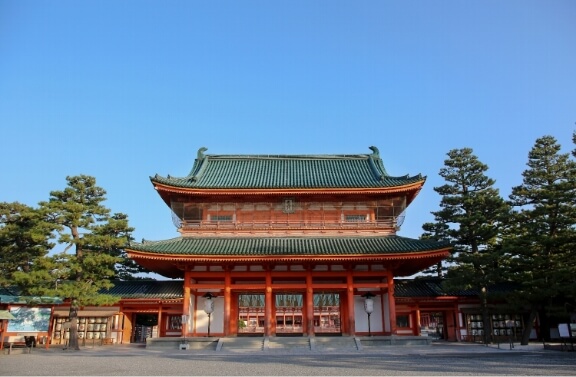
Heian Shrine
The shrine was built in 1895 to commemorate the 1,100th anniversary of the relocation of the capital to Heian-kyo, with Emperor Kammu as the deified deity. The vermilion-lacquered torii gate and shrine pavilions are eye-catching and create the elegant atmosphere of Heian-kyo. The Heian Jingu Shrine Garden is a place of scenic beauty with weeping cherry blossoms in spring, toiwaka and irises in early summer, and autumnal foliage in fall.
Photo credit: Heian Shrine -
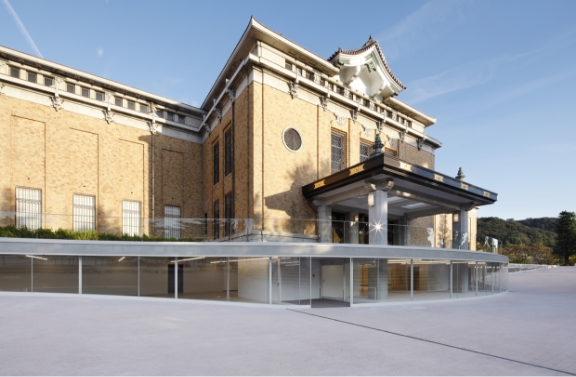
Kyoto City KYOCERA Museum of Art
Opened in 1933 as the second public art museum in Japan. It will reopen in 2020 with a modern design while preserving the design of the main building, which was a fusion of Japanese and Western styles when it was first built. Public spaces such as Kyocera Square, Central Hall, and Higashiyama Cube Terrace will be opened to the public free of charge, making the museum more open to the public.
Photo credit: Takeru Koroda -
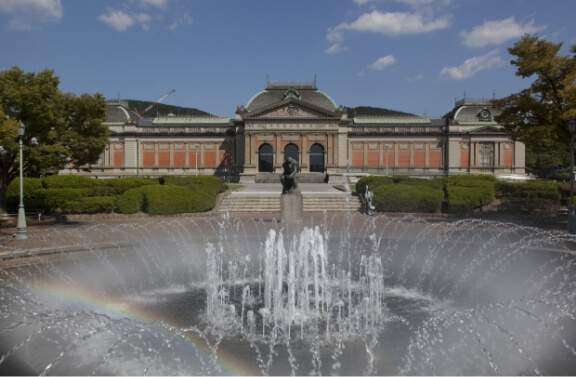
Kyoto National Museum
Opened in May 1897. The museum collects, stores, and exhibits cultural properties mainly from the culture of Kyoto from the Heian period to the Edo period. Visitors can enjoy a variety of permanent exhibitions and special exhibitions held several times a year. The main building, "Meiji-kotoh-kan," is made of red bricks from the Meiji period (currently undergoing seismic isolation and other renovations). and a new wing, the "Heisei Chishinkan," which has two different architectural styles.
Photo credit: Kyoto National Museum -
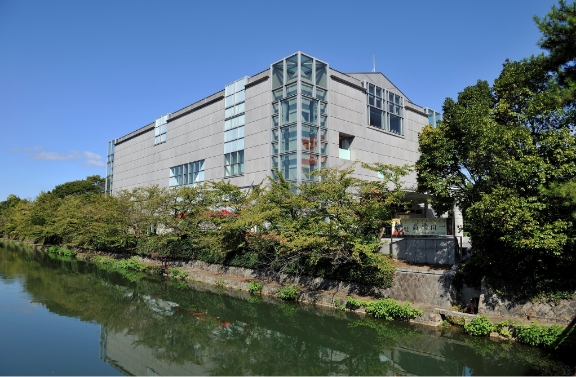
Kyoto National Museum of Modern Art
The Kyoto National Museum of Modern Art is dedicated to collecting and researching a diverse range of artworks, with a focus on modern art. The museum places emphasis on art and craft from western Japan, particularly in Kyoto, and actively collects and exhibits ceramics, textiles, as well as Japanese and Western paintings from the Kyoto art scene. The museum hosts both curated exhibitions centered around Kyoto and broader themes, including international artworks, design, and contemporary art,making it an engaging destination for art enthusiasts.
Photo credit: Kunihiro Shikata



